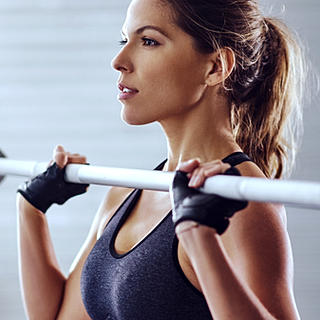Your route to becoming a Sports Massage Therapist....Qualifications are changing!
- fit4training
- Apr 30, 2015
- 3 min read
Being a Sports Massage Therapist is a very varied occupation. You could be providing immediate first aid, attending to injuries in a recreational, training and competitive environment. You would be responsible for assessing, treating and, where appropriate, referring on to other specialist interventions and providing sports massage pre and post activity. You would need to utilise your knowledge of the principles of exercise and sport to design and implement appropriate rehabilitation and injury prevention programmes.

To be a Sports Massage Therapist it is important you have a number of qualities. These include:
The confidence to work closely with clients
Practical skills and good manual skills
Good communication and listening skills
The ability to develop empathy with clients
Physical stamina for carrying out a number of treatments a day
A smart appearance and good personal hygiene
The ability to recognise when a client needs to be referred to a qualified medical doctor
Commercial skills to run a business
The ability to keep accurate and up-to-date client records (National Careers Service)
On a Sports Massage Therapy course, you would expect to learn about:
Structure and functions of the human body to include the skin, skeletal system, joints, muscular system, nervous system, endocrine system, cardiovascular, respiratory system, lymphatic system, urinary system, digestive system.
Effects of sports massage on each of these body systems
Principles of Exercise
Components of fitness
Principles of training
Sports massage legislation
Scope of practice in sports massage
Principles of professional practice
Recording and maintaining client records
Soft tissue dysfunction
Process of repair of soft tissue
Fundamentals of sports massage treatments
Assessing and screening clients for treatment
Carrying out client assessments
Devising treatment plans
Applying sports massage treatments
You may already be aware that industry Sports Massage qualifications changed as of 1st April 2015. The former 'Certificates' in Sports Massage have been updated to 'Diploma" qualifications. The qualifications have been changed at the request of the professional associations to have a qualification which met the agreed minimum standard for The Council of Soft Tissue Therapies and The Complementary and Natural Healthcare Council, based on feedback from traiing centres and changes to National Occupational Standards. They also wanted a clearer progression from Level 3 to Level 4 allowing the learner sufficient time to develop appropriate skills and knowledge. Main Changes to the Qualifications Level 3 The old Sports Massage Therapy qualification included more theoretical content looking at a wider range of conditions and treatments. This meant the lines were often not clear as to whether a Level 3 could treat injuries etc. The theoretical content also limited the practical development of massage skills. The new qualification has drawn clear lines between a Level 3 and 4 and a Level 3 can work with dysfunctions only, therefore they develop and are assessed for their massage and hands on practical competence. To begin to deal with injuries they require more experience and can progress onto the Level 4. This provides a clearer progression plan and Sports Massage Therapists will have better practical skills. Level 4 There is more clear definition between the levels now which provides a clearer progression in content from Level 3 to Level 4. The learner at Level 4 now needs to be able to palpate specific bony and soft tissue structures (development of their Anatomy and physiology knowledge), understand a range of dysfunctions and some injuries, treatments and when to utilise each treatment technique during which stage of repair. Supporting treatments are also now introduced at Level 4 whereas this was previously crammed in at Level 3 (cryotherapy, heat treatments, other supporting treatments such as exercise/ flexibility and mobility treatments). The assessments now look more invasive but with appropriate planning these can be effectively incorporated into a strong delivery model. Each practical assessment is more focused on proving competence for the specific skills, rather than showing an overview of a whole session. These assessments can be integrated and isolated as the delivery model requires. Fit4Training will be launching the NEW Level 3 Diploma in Sports Massage Therapy before Summer 2015, closely followed by the NEW Level 4 qualification. If you have any questions or would like further information, please email, Michelle Bailey on michelle@fit4training.com











Comments